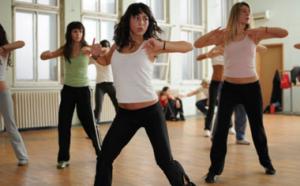Around 6,000 schools offer dance lessons in their programs. Dancing is definitely the new trend. Aerobic dance was born in 1970 as a way of making aerobic exercises more fun, while burning calories and staying fit. Facing a large mirror, these classes are characterized by teaching choreography with catchy music on the background.
The climax of aerobic dance was in the 80s with the film “Flashdance” and the TV series “Fame,” starring Irene Cara.
Currently, there are many reality shows, TV series, and movies that have come to motivate people with their Broadway-style steps.
Steps for Everyone You don’t need classic ballet knowledge to attend an aerobic dance class. Although many of the teachers come from the dance world, there are clases for all rhythms, from salsa and merengue to hip-hop and African dance.
Regardless of the style, most classes begin with 5 to 10-minute warm up, 20-30 minutes of choreography or dance steps, 20 minutes of fitness work, and a 5 to 10-minute cool-down.
7 Health Benefits For the benefits of physical activity to reflect in your body, aerobic dance requires regular practice; at least two to three times a week.
Among its main benefits are:
• It helps burn calories and lose weight: a 120-pound (54 Kg) person burns around 218 calories at a 40-minute class.
• Tones upper and lower muscles.
• Strengthens the lungs and heart.
• Improves circulation and reduces cholesterol.
• Reduces stress.
• Increases self-esteem and fights depression, anxiety, and stress.
• Helps maintain a healthy immune system.
Finally, Don’t Forget Your Feet The National Academy of Podiatric Sports Medicine warns that in order to avoid injuries it is crucial to choose appropriate footwear. Shoes should be sufficiently padded, and should absorb shock in order to compensate pressure. They should also have an adequate support on both sides to provide stability. “The impact of aerobics may exceed six times the force of gravity, and this force is transmitted to the 26 foot bones,” explains the AAPSM.
Moreover, as many of the moves are side to side, shoes need to have an arc that compensates such moves, and a fairly thick leather to support your feet, so you get stability and prevent slipping.
For these reasons, running shoes are not recommended, since they lack lateral stability and have a high heel.
The best time to buy shoes, according to the National Academy of Podiatric Sports Medicine, is in the afternoon, when feet are little more swollen than in the morning.
Now, with the right shoes, you may get carried away by the music and shake it up. Both your body and spirit will be grateful.


